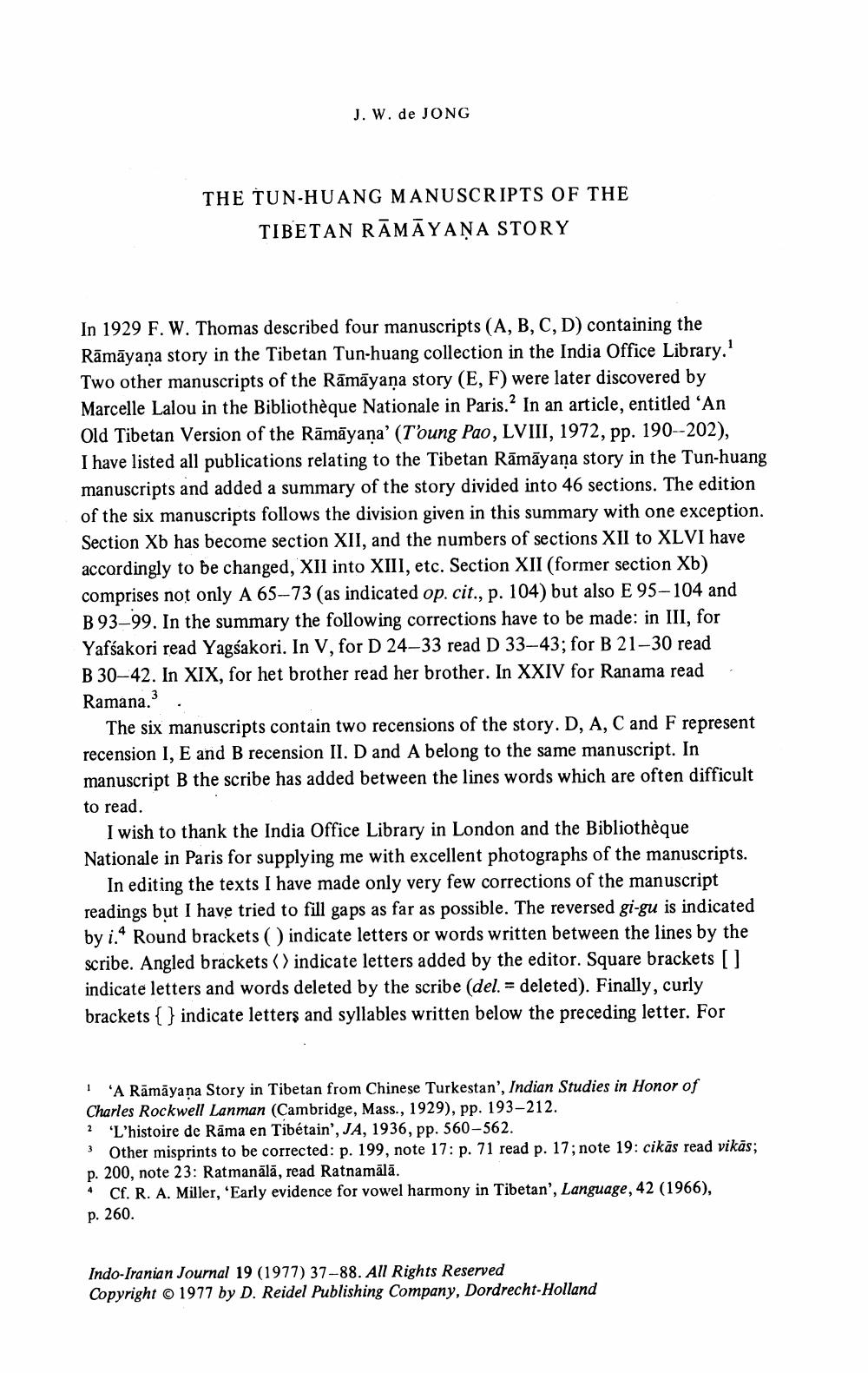Book Title: Tun Huang Manuscripts Of Tibetan Ramayana Story Author(s): J W De Jong Publisher: J W De Jong View full book textPage 1
________________ J. W. de JONG THE TUN-HUANG MANUSCRIPTS OF THE TIBETAN RĀMĀYAŅA STORY In 1929 F. W. Thomas described four manuscripts (A, B, C, D) containing the Rāmāyana story in the Tibetan Tun-huang collection in the India Office Library. Two other manuscripts of the Rāmāyana story (E, F) were later discovered by Marcelle Lalou in the Bibliothèque Nationale in Paris.? In an article, entitled 'An Old Tibetan Version of the Rāmāyana' (Toung Pao, LVIII, 1972, pp. 190--202), I have listed all publications relating to the Tibetan Rāmāyana story in the Tun-huang manuscripts and added a summary of the story divided into 46 sections. The edition of the six manuscripts follows the division given in this summary with one exception. Section Xb has become section XII, and the numbers of sections XII to XLVI have accordingly to be changed, XII into XIII, etc. Section XII (former section Xb) comprises not only A 65-73 (as indicated op. cit., p. 104) but also E 95-104 and B 93–99. In the summary the following corrections have to be made: in III, for Yafsakori read Yagsakori. In V, for D 24-33 read D 33–43; for B 21-30 read B 30–42. In XIX, for het brother read her brother. In XXIV for Ranama read Ramana. . The six manuscripts contain two recensions of the story. D, A, C and F represent recension I, E and B recension II. D and A belong to the same manuscript. In manuscript B the scribe has added between the lines words which are often difficult to read. I wish to thank the India Office Library in London and the Bibliothèque Nationale in Paris for supplying me with excellent photographs of the manuscripts. In editing the texts I have made only very few corrections of the manuscript readings but I have tried to fill gaps as far as possible. The reversed gi-gu is indicated by i.Round brackets ( indicate letters or words written between the lines by the scribe. Angled brackets () indicate letters added by the editor. Square brackets [] indicate letters and words deleted by the scribe (del. = deleted). Finally, curly brackets { } indicate letters and syllables written below the preceding letter. For I'A Rāmāyana Story in Tibetan from Chinese Turkestan', Indian Studies in Honor of Charles Rockwell Lanman (Cambridge, Mass., 1929), pp. 193-212. 2 'L'histoire de Rāma en Tibétain', JA, 1936, pp. 560-562. 3 Other misprints to be corrected: p. 199, note 17: p. 71 read p. 17; note 19: cikäs read vikās; p. 200, note 23: Ratmanālā, read Ratnamālā. Cf. R. A. Miller, 'Early evidence for vowel harmony in Tibetan', Language, 42 (1966), p. 260. Indo-Iranian Journal 19 (1977) 37-88. All Rights Reserved Copyright © 1977 by D. Reidel Publishing Company, Dordrecht-HollandPage Navigation
1 2 3 4 5 6 7 8 9 10 11 12 ... 52
